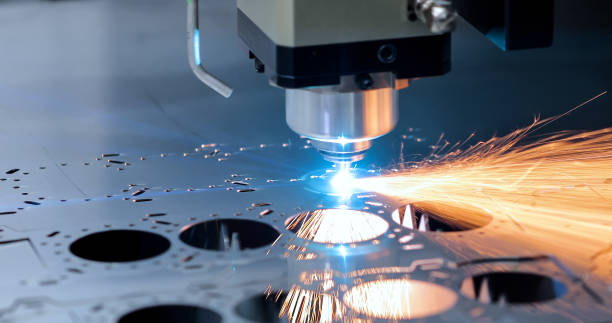Can You Use CNC Bits in a Router?
While it’s technically possible to use some CNC bits in a handheld router, it’s generally not recommended due to significant differences in design, operation, and safety considerations. This guide will explore the compatibility of CNC bits with traditional routers, highlighting important factors to consider.
Understanding CNC Bits and Router Bits
Before delving into compatibility, it’s crucial to understand the differences between CNC bits and traditional router bits:
CNC Bits
- Designed for computer-controlled machines
- Often have a smaller shank diameter
- May have different flute designs for chip evacuation
- Typically run at higher speeds
Traditional Router Bits
- Designed for handheld or table-mounted routers
- Usually have a 1/4″ or 1/2″ shank
- Flute designs optimized for manual feed rates
- Run at lower speeds compared to CNC operations

A CNC router uses specialized bits different from traditional routers
Factors to Consider
1. Shank Size
Most handheld routers use 1/4″ or 1/2″ collets, while many CNC bits have smaller shank diameters. This size mismatch can make it impossible to securely mount some CNC bits in a traditional router.
2. Speed Ratings
CNC machines like those using a 2.2KW ER20 Air-Cooled Spindle often operate at much higher speeds than handheld routers. CNC bits may not be designed to run safely at the lower speeds of traditional routers.
3. Chip Evacuation
CNC bits are designed for the consistent feed rates and chip evacuation of CNC machines. They may not perform well with the variable feed rates of manual routing.
4. Cutting Geometry
The cutting geometry of CNC bits is optimized for CNC machining conditions and may not produce good results in a handheld router.
5. Safety Concerns
Using tools not designed for a specific machine can pose serious safety risks, including bit breakage or loss of control.
When CNC Bits Might Work in a Router
In some cases, you might be able to use a CNC bit in a router:
- If the shank size matches your router’s collet
- For light-duty operations within the bit’s and router’s speed range
- When using bits designed for both CNC and manual use (some manufacturers produce these)
Best Practices for Router Bit Selection
- Use bits specifically designed for your type of router
- Match the shank size to your router’s collet
- Adhere to the manufacturer’s recommended speed ranges
- Consider the material you’re cutting when selecting bits
Alternatives to Using CNC Bits in a Router
- Use a CNC router for precision work requiring CNC bits
- Invest in a set of high-quality router bits designed for your specific router
- Consider a CNC conversion kit for your router if you need CNC capabilities
FAQ
1. Can I use any CNC bit in my handheld router?
No, most CNC bits are not designed for use in handheld routers and can be dangerous if used improperly.
2. What’s the main difference between CNC bits and router bits?
CNC bits are designed for higher speeds, have different flute geometries, and often have smaller shank sizes compared to traditional router bits.
3. Are there any router bits that can be used in a CNC machine?
Some router bits can be used in CNC machines if they meet the speed and shank size requirements. However, they may not perform as efficiently as purpose-designed CNC bits.
4. Can I modify a CNC bit to fit my router?
Modifying bits is not recommended as it can compromise the tool’s integrity and safety.
5. What should I do if I need CNC-like precision but only have a router?
Consider investing in a CNC router or a CNC conversion kit for your existing router. For machines with higher power requirements, options like the 3.5KW ER20 Air-Cooled Spindles can provide enhanced capabilities.
6. Are there universal bits that work in both CNC machines and routers?
Some manufacturers produce bits designed for both CNC and manual use, but these are specific products and not all bits are universal.
Conclusion
While it’s technically possible to use some CNC bits in a traditional router under certain circumstances, it’s generally not recommended due to safety concerns and performance issues. The differences in design, operation, and intended use between CNC bits and router bits are significant enough that they should typically not be interchanged.
For the best results and safest operation, it’s crucial to use bits specifically designed for your type of machine. If you find yourself frequently needing the capabilities of both CNC bits and traditional router bits, consider investing in separate tools for each purpose or exploring CNC conversion options for your existing router.
Remember, the key to successful and safe woodworking or metalworking lies in using the right tool for the job. While it might be tempting to try to make do with what you have, using the correct, purpose-designed bits will ultimately lead to better results, improved safety, and a more enjoyable woodworking experience.
As CNC technology becomes more accessible, many woodworkers are finding that having both traditional routing capabilities and CNC precision in their workshops opens up new possibilities for creativity and craftsmanship. Whether you choose to stick with traditional routing or explore the world of CNC, understanding the tools and their proper use is essential for achieving the best outcomes in your projects.

